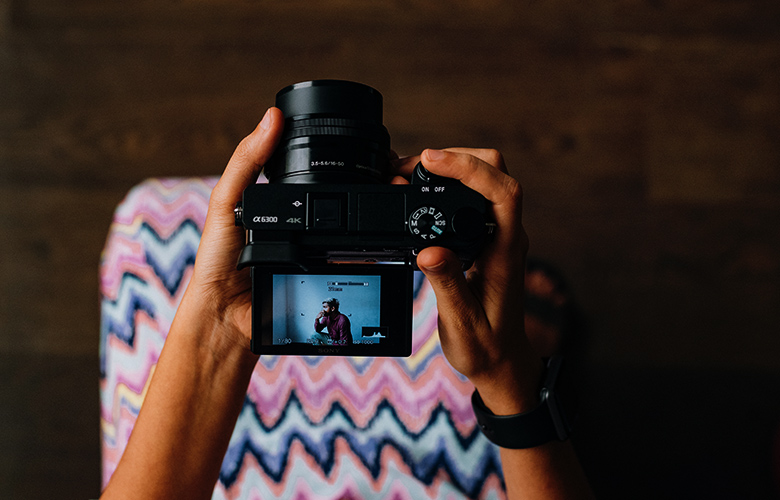
Hello there! Let’s cut straight to the case and talk self-taping! Nowadays, it’s more relevant than ever and it’s going to become even more important over the next couple of years. Self-taping has opened up endless opportunities for emerging actors from all over the world, however it does mean that there are way more actors competing for each role. No one has the time or desire to look at average, boring and poorly put together audition tapes.
The reality of it is – if your performance doesn’t captivate in the first 10 seconds, it is safe to say “bye bye” to your dream role. That’s why it’s important to know what to do, and do it properly, to have a fighting chance. You’re competing with millions of other deserving actors, you will be pushed aside by all the ones nailing it.
Whether you like it or not, self-taping is the way of the future. You can either run from it or embrace it! I suggest you take on the challenge and master the art of self-taping.
Here are a few tips and tricks to keep in mind when you’re putting together an audition tape for the next project that comes your way!
This is your self-tape, your take on the character and the scene, own your voice and trust your gut. Don’t go with obvious choices for your character, dig deep! Remember that you want to stand out among hundreds of others. Character interpretation is a subjective process – there is no right or wrong! Therefore, trust your instincts and deliver a natural and authentic performance rather than resorting to the most obvious choices already hinted at by the writer. Boring self-tapes don’t do well. The focus needs to be on YOU in every single way.
Here is a checklist of potential components that can steal your thunder!
It doesn’t matter if a scene is set in a bathroom, don’t ever film it there. You don’t want a casting director checking out your bathroom tiles rather than keeping their attention on you. Film in front of a plain wall or a backdrop (grey, blue and beige colours would be the best options to go with). A backdrop can be as basic as a big bed sheet pinned to the wall – make sure it’s clean and pressed.
If you’re using a reader, they can be quite overpowering if they are right by the camera. This is YOUR tape, not theirs. You can solve this by moving the reader back a bit (making sure your eyeline still works) or by asking them to lower their volume and not over-deliver. Bad acting by your reader can also be distracting – if your reader isn’t another actor, get them to just read the lines straight without attempting to “act”.
Don’t use them, or keep it to a minimum. If you’re having a phone conversation in the scene it would be absolutely fine to use a phone, but make sure it doesn’t have a bright pink 3D case on it. If the scene doesn’t require any props then don’t add them.
No No No. Know your lines. Period.
Make sure you’re in focus! Double and triple check your focus before you film. You can even give yourself a mark on the floor to make sure you remain in focus. You don’t want to give the best performance of your lifetime only then to realise that you were out of focus the whole way through.
Record a test tape. Can you be heard clearly without distortion? Are there any background noises – even subtle ones like a fridge humming, washing machine/dryer? Record when alone if possible, in a room with door closed.
Avoid busy patterns, stripes, baggy/loose layers, logos, and accessories (unless the character really calls for it). Just wear a basic plain coloured top that suits your complexion and “pops” against the background.
All of the above can disrupt the viewer’s attention in a split second. Boom. Opportunity wasted.
You need to be SEEN, which implies that your lighting, framing and the quality of your video have to be on point.
Lighting needs to be soft – no harsh shadows. You don’t need a lighting kit to achieve this. Find yourself a big window and position yourself facing towards it – with the light coming from BEHIND the camera. Trust me, you will get the softest and most flattering light you can get. If you’re at work during the day and the only time you can film is at night then it will definitely be worth investing in a couple of studio lights. A house light from the ceiling will create too many shadows and not flatter your face. These days lighting equipment is way more accessible and relatively inexpensive if you shop around. Considering you will be recording a lot of self-tapes during the course of your career, investing in a lighting kit would be a solid investment.
Framing must be horizontal even if you’re filming on your smartphone. You should be in the centre of the frame, preferably in a medium close up or a close up shot (pay attention to what is requested by the casting director) and you need to know your limits within that frame at all times. Why? You don’t want to deliver your lines like a robot – a little bit of movement is fine and encouraged as it makes a performance more natural, but you must remain within your frame. Don’t be theatrical, but don’t be a corpse. Camera technique workshops will help with this if you are green or transitioning from stage.
Good quality is a MUST when it comes to self-tapes! You don’t need to shoot in 4K on an expensive video camera. You can film either on a DSLR camera or even your smartphone, both can record good quality video. Also, make sure the camera stays steady. You can pop your camera on a stack of books – no one will ever know. There are also plenty of tripods and phone mounts to choose from.
If all of the technical elements are as good as they can be, then there is nothing standing in the way between you and your viewer! You can be judged solely on your performance – this is the goal.
Let’s say you’ve nailed it! You’ve poured your heart and soul into it and delivered the best performance you could, everything worked beautifully, both technically and artistically – all you have left to do is send the tape through.
How do you do that successfully?
Firstly, adhere to any instructions given by the casting team. Double check, triple check, tick everything off their list exactly the way they’ve requested. Don’t be a schmuck – if they want something a certain way, why the heck wouldn’t you deliver it that way? Perfect the things you can control. If no instructions are given, here are some general methods:
1. Make sure you export the file in a watchable format – your tape is useless if it can’t be viewed easily. (Hint: MP4 is the most watchable format these days).
2. Label it properly! “My Movie 1” is unacceptable. You can use the following format to make life easier for the casting director – YOUR NAME – ROLE – SCENE – PROJECT.
3. Your audition tape has be watchable on all devices. Upload to Vimeo or Dropbox rather than YouTube. Make sure your video is downloadable and only viewable by those with the link – you don’t want to breach confidentiality by having a public video… that most definitely won’t help you book the job.
Self-taping is a trend that will only continue to grow so I suggest you get on that horse and perfect your technique. Self-taped clips are also a great alternative to professional reels these days – having some on a Vimeo page that your agent can send through to decision makers will only HELP you. If they can’t see you or your work… you’ll be pushed aside by those who have their tools in order.
FUN FACT: If you’re a member of Equity New Zealand you have a professional self-tape studio at your disposal – LUCKY YOU!
Published in cooperation with Fourth Wall – Actors & Talent Agency


Veronika has a production background and is an extremely gifted photographer, always experimenting and working on her craft. She graduated from Unitec Film School with a Bachelor of Performing & Screen Arts and has worked as a producer, director, and 1st AD so is very familiar with the many facets of New Zealand’s thriving screen industry. It was through producing a short film and closely liaising with agents that she realised actor management was the right career path for her. She is a self-confessed workaholic that can always find something to do, or create something to do, and has a knack for pushing people to reach their full potential.
Read Full Profile© 2021 TheatreArtLife. All rights reserved.

Thank you so much for reading, but you have now reached your free article limit for this month.
Our contributors are currently writing more articles for you to enjoy.
To keep reading, all you have to do is become a subscriber and then you can read unlimited articles anytime.
Your investment will help us continue to ignite connections across the globe in live entertainment and build this community for industry professionals.